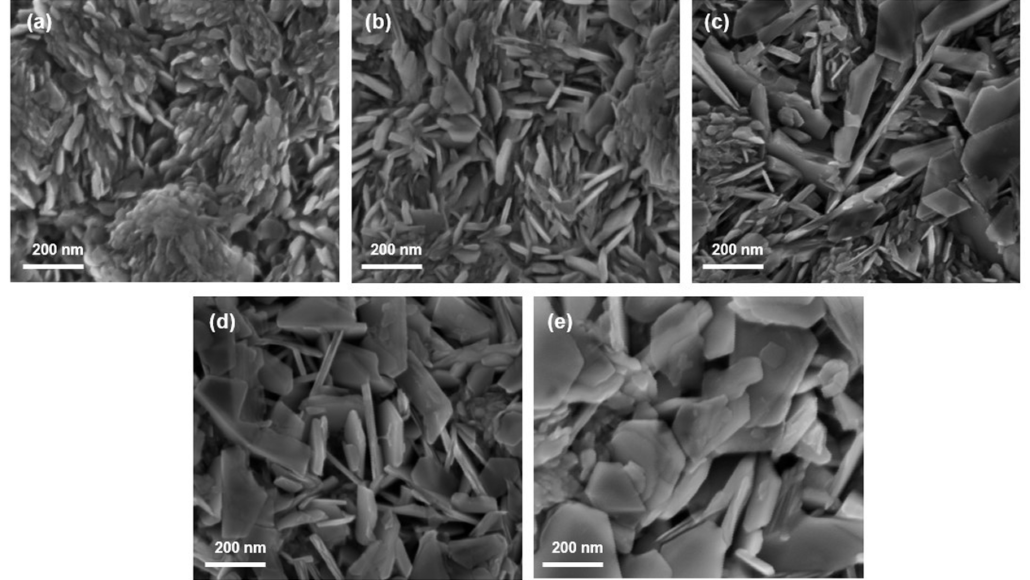New photoanodes made from 2D tin sulfide nanosheets enhance the visible light absorption of photoelectrochemical devices
In a recent study featured in the International Journal of Hydrogen Energy, researchers have showcased the promising potential of 2D tin sulfide (SnS₂) multilayer nanosheets within photoelectrochemical (PEC) systems. More specifically, they have demonstrated the capability of these solution-processed photoanodes to effectively absorb and convert visible light into chemical energy. Consequently, these findings establish them as compelling materials for enhancing various PEC applications, notably including solar fuel and hydrogen production.
Photoelectrochemical (PEC) water splitting and CO2 reduction based on solar energy is a promising approach for the production of green hydrogen and the conversion of CO2 into renewable fuels or feedstock. However, the deployment of PEC systems is limited by the excessive or extensive band gaps of metal oxide photoanodes, which do not allow efficient visible light absorption. Mid and large band gap materials suitable for tandem applications remain difficult to find due to their cost, scarcity of abundant materials, or low efficiency.
Recently, 2D atomically thin transition metal chalcogenides (TMCs) such as WS2, WSe2, MoS2, and MoSe2 have become the center of attention for their efficiency, tunability, and low cost, making them suitable for PEC applications as absorbers with shorter band gaps and also as catalysts for hydrogen and oxygen evolution reactions. Among these materials, tin sulfides (SnxSy) have attracted interest due to the abundance of tin and sulfur, their fabrication simplicity, semitransparency, and enhanced photocatalytic activity.
In this new study, ICFO researchers and SOREC2 team members, Jordi Martorell and Carles Ros, in collaboration with Yudania Sanchez, Maxim Guc, Maykel Jiménez –Guerra and Alejandro Perez-Rodriguez from Catalonia Institute for Energy Research (IREC); Sara Martí-Sánchez and Jordi Arbiol from ICN2; and Shadai Lugo-Loredo from Universidad Autónoma de Nuevo León (UANL), describe the fabrication and optimization of photoanodes made from 2D tin sulfide (SnS₂) multilayer nanosheets using solution-processed techniques. Their work, recently published in the International Journal of Hydrogen Energy, reveals for the first time the visible light absorption and conversion capabilities of these 2D SnS₂-based photoanodes.
The researchers fabricated the photoanodes using a two-step, solution-based process. At the nanoscale, samples fabricated with the highest annealing temperature (500 °C) exhibited well-defined, multilayer, 2D hexagonal SnS₂ nanosheets exceeding 400 nm in width. This phase also displayed the smallest electronically active bandgap, improving the material’s ability to convert visible light into electrical energy.

Analyzing the current conversion effciency
The scientists further evaluated the photoelectrochemical capabilities of the fabricated SnS₂ layers, employed as photoanodes for the oxygen evolution reaction (OER) in a single-compartment water splitting cell. After optimizing post-treatment procedures, the researchers obtained SnS₂ nanosheet samples that generated photovoltages exceeding 1.06 volts and photocurrents surpassing 1.6 mA/cm². Additionally, they measured the incident photon-to-current conversion efficiency (IPCE) of these enhanced SnS₂ samples. The researchers observed photon conversion by the SnS₂ nanosheets across the 500-900 nm range (visible spectrum), with a maximum IPCE of 75% at 330 nm.
“The observed IPCE profile indicates that SnS₂ 2D nanosheet photoanodes fabricated using solution-processed means having a significant potential for enhancing absorption and conversion across the entire visible light spectrum, positioning them as promising materials for efficient solar hydrogen production”, the authors wrote.
“Our work contributes to a better understanding of transition metal sulfides as 2D photo-absorber materials in photoelectrochemical conditions”, said Carles Ros, leading author of the study.
Original article
Yudania Sánchez, Maxim Guc, Sara Martí-Sánchez, Maykel Jiménez-Guerra, Shadai Lugo-Loredo, Jordi Arbiol, Alejandro Perez-Rodriguez, Jordi Martorell, Carles Ros. (2024). 2D nanosheet SnS2 solution-processed photoanodes: Unveiling enhanced visible light absorption for solar fuels applications. International Journal of Hydrogen Energy, 77, 193–202. https://doi.org/https://doi.org/10.1016/j.ijhydene.2024.06.160





